Alphabets, Flowers, and Verse: American Samplers and Needlework by Girls

Lydia Pearson (American, born 1791). Embroidered sampler, 1802. Embroidered silk on linen, 17 x 12 in. (43.2 x 30.5 cm). The Metropolitan Museum of Art, New York, Purchase, Friends of the American Wing, by exchange, 2002 (2002.129)
How do you show others what you've learned at home or school? Do you share pictures you've drawn or stories you've written down?
When she was eleven years old, a girl named Lydia Pearson wanted to share her work, too. The year was 1802. To show the embroidery skills she'd learned, she made the beautiful sampler you see here (above). Embroidery is a way of sewing decorative patterns onto cloth using a needle and different colored threads.
During the 1800's and earlier, many young American girls embroidered samplers and other colorful works of art. This was called needlework. The girls learned from family members and sometimes also from teachers at school. Families saved the needlework and passed them down as family treasures. Many examples of needlework survive today for us to admire and study as works of art.
The Met has a large collection of needlework where you can learn more about the artworks Lydia and others made. Amelia Peck is a curator at the Museum who studies American textiles, or woven cloth. She has discovered many wonderful examples of American needlework and brought them into the Museum's collection. Here are a few I love.
Designs on American Samplers
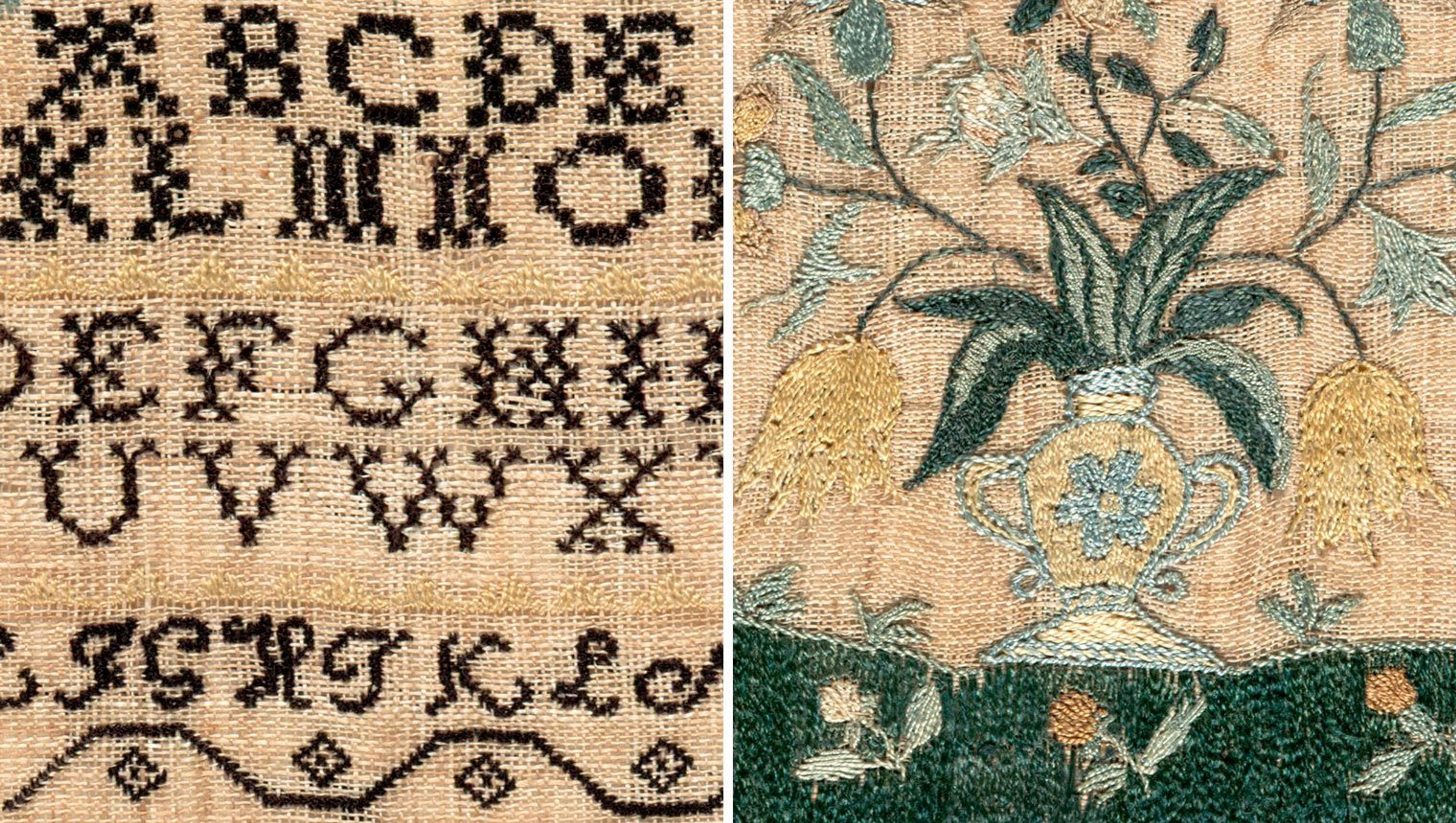
What details of Lydia's sampler catch your eye? Lydia Pearson (American, born 1791). Embroidered sampler, 1802. Embroidered silk on linen, 17 x 12 in. (43.2 x 30.5 cm). The Metropolitan Museum of Art, New York, Purchase, Friends of the American Wing, by exchange, 2002 (2002.129)
Let's start by looking closely at Lydia's sampler. What designs catch your eye? Letters or flowers? Anything else?
When I look, I notice how the alphabet repeats on Lydia's sampler. I remember practicing my own handwriting skills in elementary school by writing the letters of the alphabet over and over again. Can you see how Lydia embroidered the alphabet four times to show she had learned it? She carefully stitched the letters in different styles, including uppercase, lowercase, and cursive.
Samplers were a special kind of needlework that allowed young girls to practice the alphabet and numbers. Lydia lived in the early 1800's, when many girls and young women were expected to know how to sew and make decorative needlework for their homes. They also stitched flowers, plants, and animals onto samplers. Can you spot examples of these on Lydia's sampler?

A religious verse on Lydia's sampler
You may have noticed that Lydia stitched this verse onto her sampler:
How blest the Maid whom circling years improve
Her God the object of her warmest love
Whose useful hours successive as they glide
The book the needle the pen divide.
This verse suggests that Lydia took her religious beliefs seriously and tried to spend her time in ways she considered useful, such as reading, sewing, and writing. Verses from poetry or hymns (religious songs) were often stitched onto samplers like these. These verses help us understand what kinds of activities and personal qualities were important to girls and their families so many years ago.
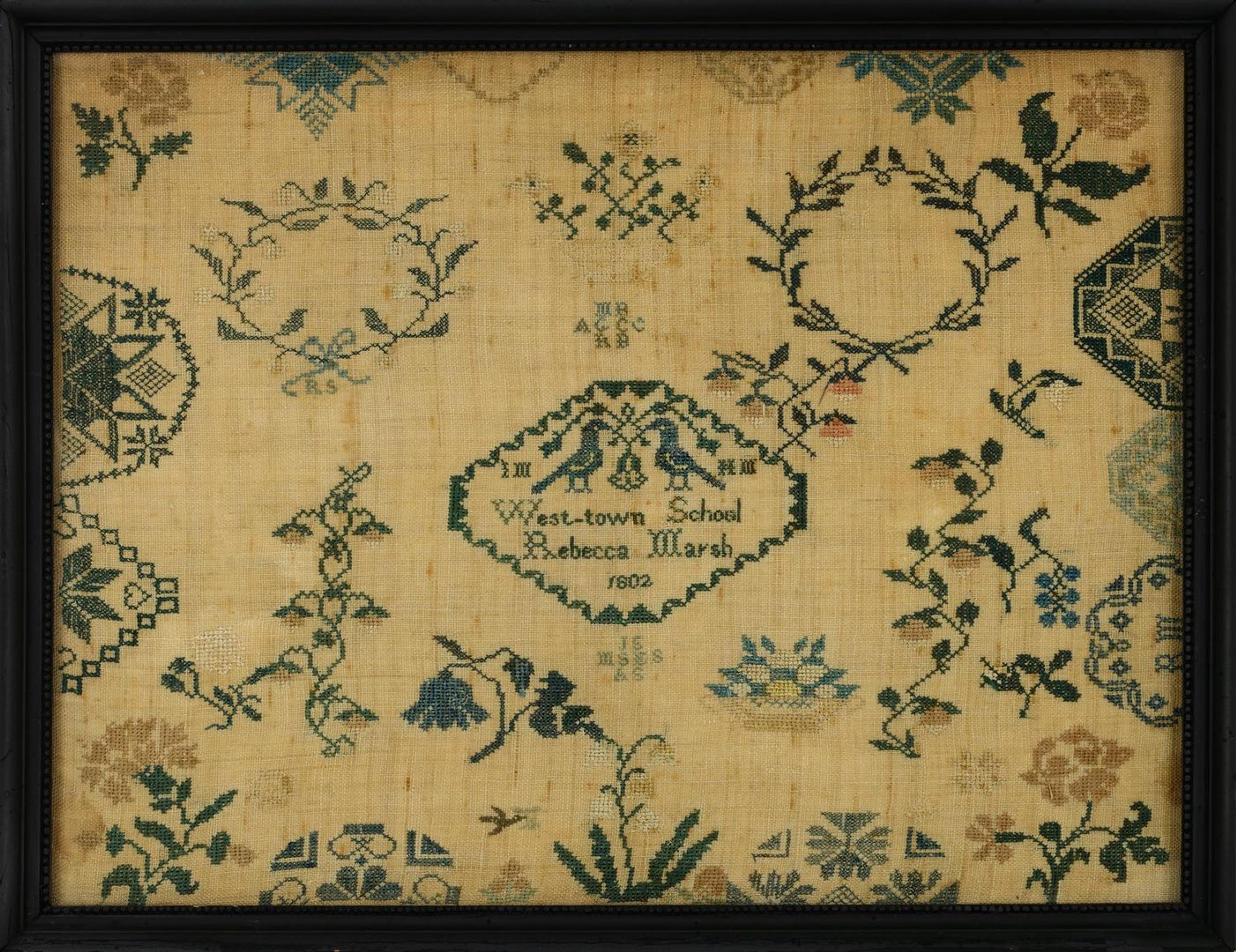
Rebecca Marsh (American, born 1791). Sampler made at the Westtown Quaker School, 1802. Silk embroidery on linen, 12 3/4; x 16 3/4 in. (32.4 x 42.5 cm). The Metropolitan Museum of Art, New York, Gift of Virginia F. Thors, 2005 (2005.463.2)
In the same year that Lydia embroidered her sampler, another young girl named Rebecca Marsh made one, too. Rebecca created hers at the Westtown Quaker School in Pennsylvania. How do we know? Take a look in the middle: she stitched her school's name above her own.
Do you notice any similarities or differences between Rebecca's sampler and Lydia's? What about the way they decorated the centers, for example? Or the borders?
Needlework Pictures

Hannah Robinson (American, 1795–1870). ''Winter'' Needlework Picture, 1819. Silk and chenille embroidery threads on silk, 17 3/4; x 19 1/4; in. (45.1 x 50.2 cm). The Metropolitan Museum of Art, New York, Purchase, Elizabeth B. Dater and Wm. Mitchell Jennings Jr. Gift, in honor of Morrison H. Heckscher and Amelia Peck, 2013 (2013.113)
After learning how to make samplers when they were little, girls like Lydia and Rebecca grew up to use their embroidery skills on more complicated needlework projects. For example, sometimes they embroidered needlework pictures to hang on the walls of their homes, just like beautiful paintings.
You can see an example of a needlework picture above. A young woman named Hannah Robinson created it in 1819. There are no leaves on the trees, so what season do you think it is? Have you ever seen a dog on the road, heading home, like the one shown here? Many girls and women copied pictures from books for their designs, but it is possible that Hannah embroidered a picture of her own home here. She stitched a verse from a Christian hymn above the landscape. It describes how winter changes the landscape but spring would bring ''new beauties all around.'' If you created a picture showing winter or spring, what would you put in your artwork?
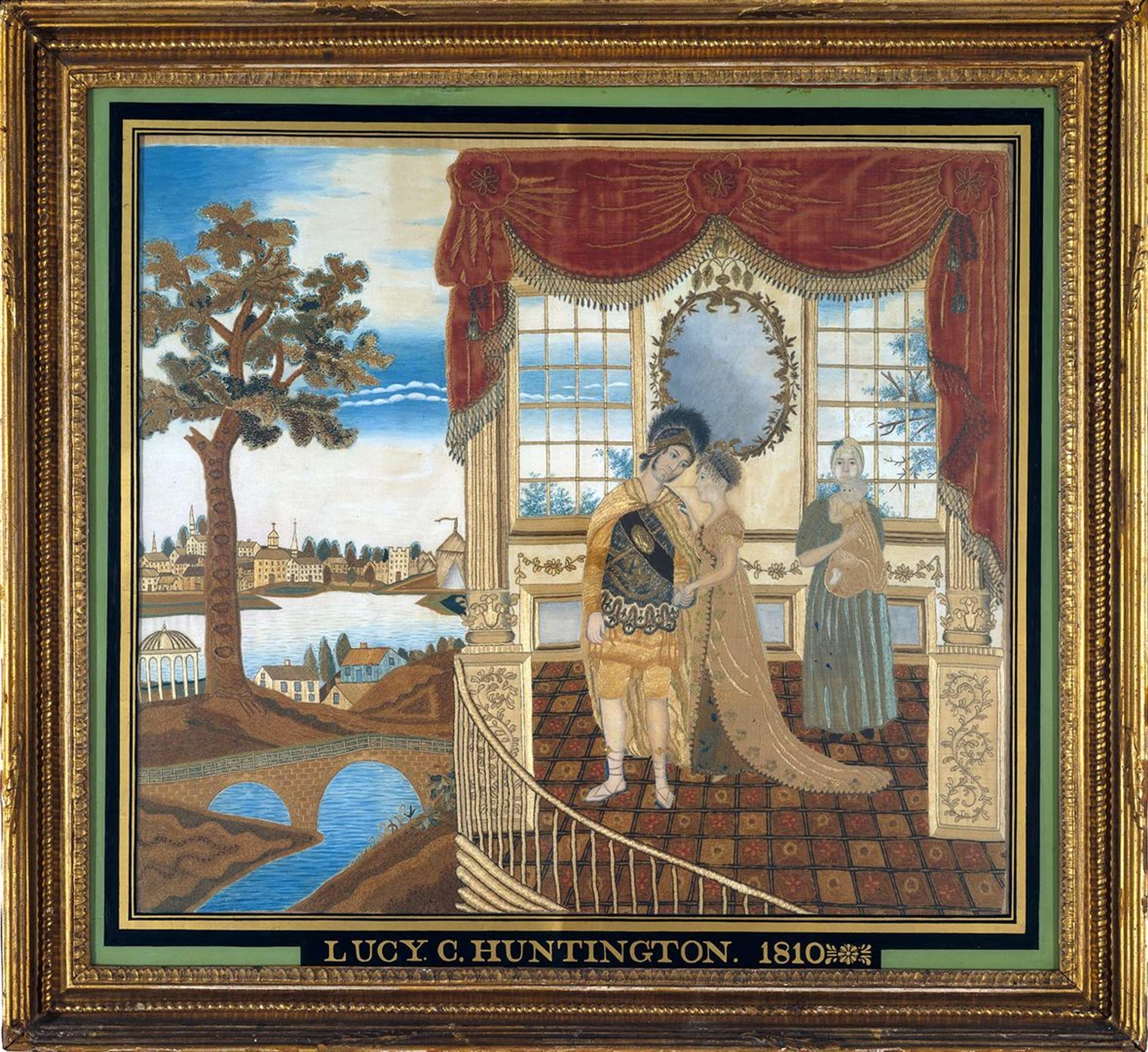
Lucy Huntington (American, 1794–1818). Hector Taking Leave of His Family, 1810. Silk embroidered with silk and metallic threads, sequins, watercolor, 31 1/8 x 28 3/4; in. (79.1 x 73 cm). The Metropolitan Museum of Art, New York, Purchase, Mrs. Russell Sage Gift, 1971 (1971.62)
Another teenager, Lucy Huntington, made this needlework picture. She studied at a school in Connecticut, and included figures of gods and human characters from ancient Greek myths, or stories. Here, the warrior Hector (the man in the fancy dress) is saying goodbye to his family to go fight in the Trojan War. Lucy stitched with multiple colors of thread, including gold and silver. What other colors of thread do you think Lucy used? Lucy also painted the sky and water with watercolor, and a professional artist or teacher helped her paint the characters' faces.
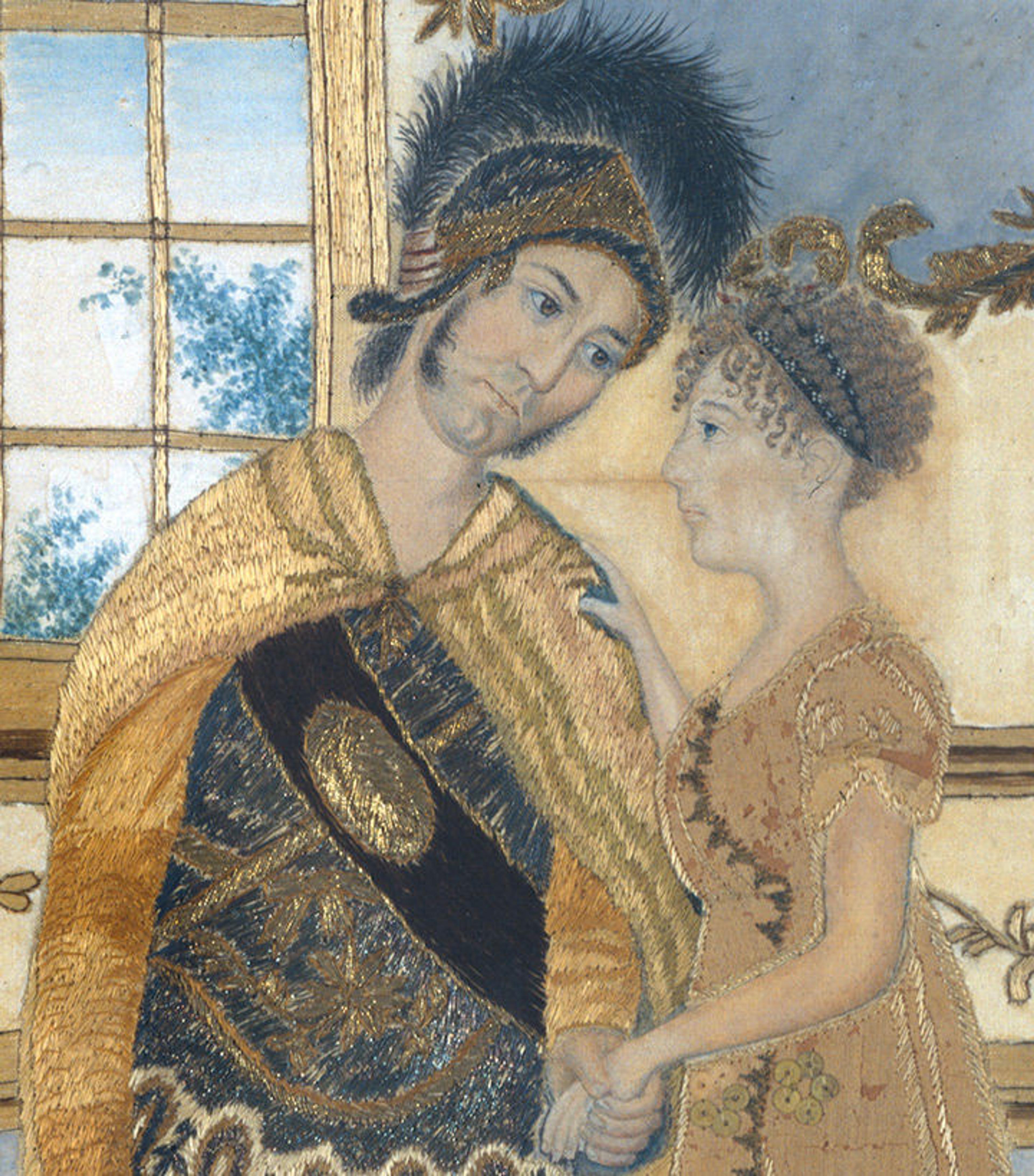
The hero Hector says goodbye to his family. How do you think Lucy created his golden armor?

Lucy used watercolor as well as thread to fill the landscape with towns and rivers. How many different textures do you see?
Lucy's needlework is full of details, like sparkling lace on the curtains and the blue leaves of distant trees. What parts of Lucy's needlework picture do you like the best? Can you find the pieces of fabric and sequins she added to bring these details out?
Would you like to try drawing your own design for a sampler or needlework picture? You can share your work with friends or family. When you visit The Met, check out gallery 727 in The American Wing to see more samplers and needlework pictures.
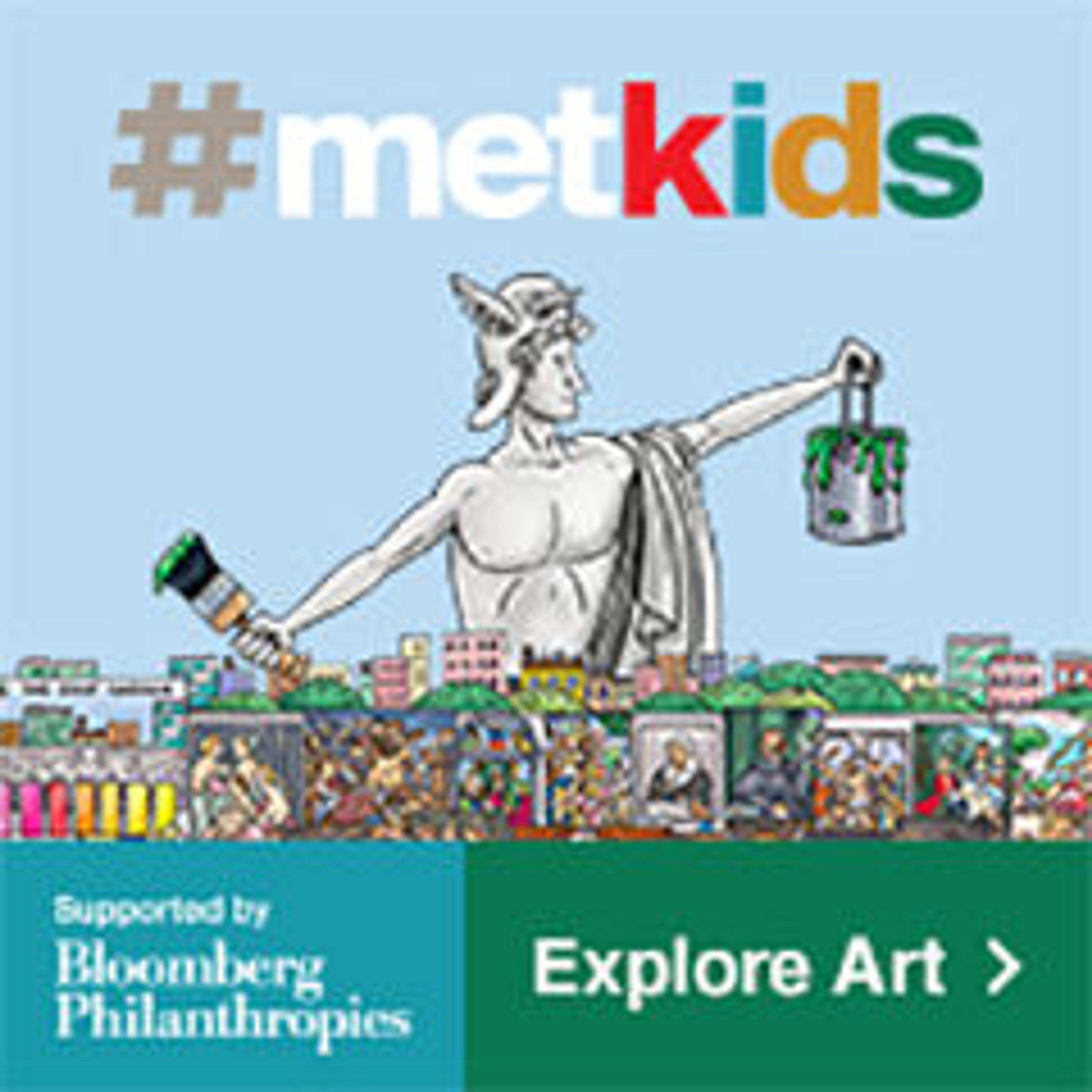
Visit #MetKids, a digital feature made for, with, and by kids! Discover fun facts about works of art, hop in our time machine, watch behind-the-scenes videos, and get ideas for your own creative projects.